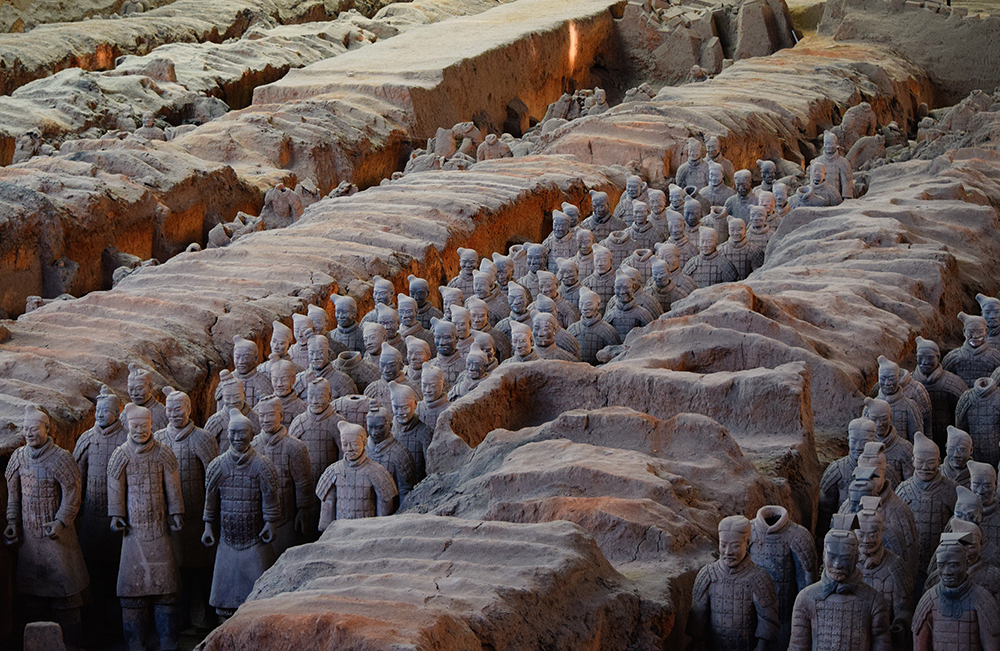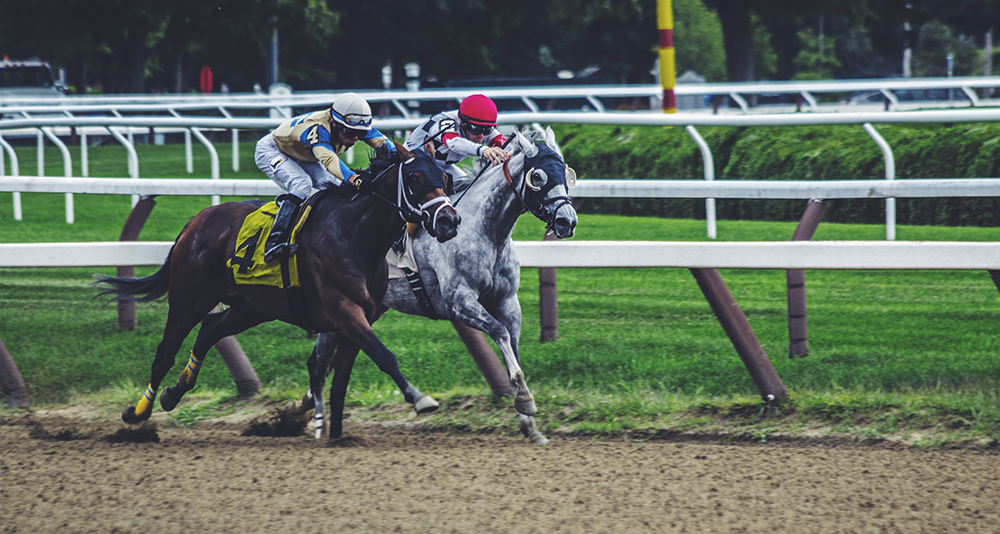Nobody saw the real Marquise Brown last season, right on through the Baltimore Ravens’ stunning playoff loss. He was good. Really good. Fast. Really fast. The man known as “Hollywood” supplied plenty of thrills as a rookie. Even in the 28-12 loss to the Titans that ended the Ravens’ season, he one-handed a bomb from Lamar Jackson between three defenders.
And yet, Brown was never himself. At any point. Not with two screws in his left foot zapping his top-end speed.
That’s why he felt shockingly invigorated right after the season ended. He was sad, sure. But as he ambled into a car with Jackson to head home, he also remembers being struck with a bolt of excitement. He told Jackson how ecstatic he was to get the screws removed and finally be the player he was always meant to be. Then the two watched film of the loss. “Over and over,” Brown says. The clock ticked past midnight.
They did this after every game together, so why stop now? After reliving every lowlight, every turnover, in painstaking detail, both Jackson and Brown were convinced: The Titans did not beat the Ravens. The Ravens beat themselves.
“Y’all played a good game,” Brown says, “but you weren’t the better team.”
This QB-WR tandem knew, rewatching that game, they’d be back.
And the confidence planted that night is growing wild a few months later. Sitting at a Piccadilly restaurant on this day in early March, his go-to plate of liver and onions polished off, Brown guarantees a Ravens Super Bowl title in 2020.
“Hey, my mom always said, ‘If you want something, you have to speak it into existence,'” he says, unflinching. “So, Super Bowl next year. The Ravens. You have to speak it into existence. … It’s going to happen. It’s going to happen, man.”
He has the confidence because he has Jackson, the breakout MVP, throwing him the ball. He has it because he has a team around him that won 14 games last season. And he has it because he knows that when he’s healthy, his skill set can make him a complement to Jackson the way that Jerry Rice was to Joe Montana.
Lamar-Hollywood the next Montana-Rice?
If jamming these four names together sounds blasphemous to you, it sure doesn’t to anyone in Baltimore. This is the expectation for Jackson and Brown, to become the next duo that changes the game.
Years past, the Marquise Browns of the world were typecast as slot receivers, return men and gadget novelties and were told they’re just too short to ride the roller coaster. Not anymore. The human blur of a receiver is now coveted, a perfect match for a mobile quarterback who forces defenses to cheat forward to shadow a scramble but can also uncork a deep ball the second his blur gains a step on his defender. That’s why so many look at Brown and see the potential for him to become an ultimate weapon for his revolutionary QB.
The Ravens offense was already a juggernaut with the best rushing attack in NFL history.
Now it will unleash Hollywood.
So, no, in this locker room, nobody hesitates to compare these two to those two.
From receiver Willie Snead IV: “You can definitely compare them to Jerry Rice and Montana or some of the other crazy combinations, QB-receiver duos. I think these two are going to set their own mark in history.”
Scott Taetsch/Getty Images
To receiver Miles Boykin: “Absolutely. They have all the tools. We have the setup. Everything is built around those two.”
To running back Justice Hill: “They could be something people really haven’t seen before. You’ve seen a lot of good combos but, first off, you haven’t seen a Lamarand then when you throw in Marquise on top of that, I mean, it’s really something you haven’t seen before. I really can’t compare them to anyone. They’re going to be…Lamar and Hollywood, the Level 1 of it. In the future, there will be more guys looking up to them. They’re crazy. Their talent is unbelievable.”
And it’s not just teammates who see this potential. There’s fear of it around the league.
Seeing these two South Florida natives training together during the pandemic, one personnel exec for an AFC North rival tells B/R: “Obviously don’t want that special bond to happen, but I can see it. Both are from Miami and probably have spent a ton of time together during this shutdown. Football is life in South Florida, so any time you get the blend of competitive, hard-working and talented all in the same guy, something special follows.”
Brown knows it is now time to take the next step.
“I’m going to make a statement this year,” he says. “A big statement.”
This is his laboratory. This is where he begins his evolution into that next-gen weapon. At XPE Sports in Fort Lauderdale. The two screws are out. All that’s left are two scars. Brown crouches into a squat on a Terra Core balance board, steps off, stares down at his bare left foot and lets out a sigh of relief.
“I feel like I have a new foot,” he says.
Brown loops an exercise band underneath his left big toe and stretches it out. He couldn’t even feel that toe last season. Now he can. As he cycles through lunges and more squats (he never did one last year), the speakers boom Offset’s “Clout,” and other NFL players on site are dancing and doing flips. Brown? He doesn’t smile. Doesn’t say a word to anyone. For him, this feels more like the calm before a storm.
Physically, there’s nothing imposing about him. At first glance, Brown looks more like an IT manager than a TD machine, but he’s changing that here on back day. Brown rows weights for an hour straight, from bands to barbells to machines, with a trainer howling hoarse rep counts in his ear. Last season, Brown played at 157 (!) pounds. (In other words, 60 pounds less than many of his contemporaries.) This season, he plans to play between 170 and 175. So no muscle goes untrained. In between reps, Brown takes a seat on a bench and rapidly grips a football with his fingertips.
Left hand to right hand. Back and forth, back and forth.
Tyler Dunne@TyDunneAnd heres an inside look, back in March, how Marquise Brown is making it happen. Having two good feet helps. https://t.co/a4JQ6wFR9c
This is a normal day for Brown back in March. After he’s done at XPE, he’ll do a throwing session with Jackson and then strenuous footwork drills to reteach his foot how to run. This is before the nationwide shutdown, but even into April, Brown is keeping as much of the routine intact as possible, with jarring results:
B/R Gridiron@brgridironWR1 work
(via @primetime_jet, the_footdoctor/IG, @GoldFeetFormula) https://t.co/TlnK58xrub
After this morning’s session, Brown says to follow him to Hollywood Boulevard in Hollywood, Florida, for lunch. Here, Brown begins by reliving the moment he wondered if his career was over. After originally injuring his foot in the 2018 Big 12 championship game, Oklahoma’s team doctors told him that he had not suffered a Lisfranc injury, which was a massive relief. “You know, that’s career-ending,” Brown says he was told.
But then he got a second opinion…and a third…and everybody kept telling him that, actually, this was a Lisfranc.
One thought reverberated in his mind: “It’s over.”
He had the screws inserted and tried to convince himself it was all in his mind. Tried to believe he could become the same player again.
That was impossible, though.
He missed all of OTAs, minicamp, two weeks of training camp and was a shell of himself with those screws in. It didn’t help that he was never able to gain chemistry with Jackson last summerchemistry that never developed in-season, either. Brown couldn’t go full bore in practice, so their timing was always a tick off. With this procedure, he says, most players have the screws removed after six months or just leave them in forever. Brown didn’t want to miss his rookie season, so he tried to find a middle ground by keeping them in for a full year and playing on.
He started the season on a tear, with 35 catches for 519 yards and six touchdowns in his first nine games. And even after disappearing down the stretch of the regular season, he capped his rookie campaign with a statement, catching seven passes for 126 yards in the loss to the Titans.
To most everyone else, Brown still seemed fast. But he knew the truth: He was missing his top gear.
“It was frustrating because I know what I can do and I’m making plays, but even when I’m making plays, it doesn’t feel right,” he says. “Everything. I had to try harder than I usually do. To run, for me, is easy. Last year, it wasn’t easy. Every step was like, ‘Ahhh…’ I’m a rookie, so you don’t want to think too much. And going out there, I was like, ‘How am I going to react if I land on my foot? How am I going to get around him?’ So there was a lot to think about.”
He takes his shoe off, mid-meal, to explain. The arch of his foot was lower, which meant he had nothing to push off of. No spring, no explosion, no ignition. Brown instead tried to push off his three middle toes all season, exertion that completely changed what his foot even looked like by season’s end. It was almost deformed.
Once the screws were removed, his foot strengthened on its own.
“I was trying to run on my toe, but since I didn’t have the power there, it just shifted,” Brown says. “With my arch down, I’d try to push on my toe, and there’s no sensation there to fire up my leg. So I have no communication to that part of it. You can’t trigger it. You can’t fire it.”
Brown didn’t lift weights after practice, returning home to “rehibernate.” Could he have still thrown some dumbbells around? Sure. But the pain in his foot was too demoralizing. He was, admittedly, too “Oh my God, I’m hurting!” What ticked Brown off most was that at Oklahoma, he always played with the same “Attack! Attack! Attack!” mentality his older cousin (Antonio Brown) possessed. But in Baltimore, he couldn’t attack. At all. At Oklahoma, Brown hit 23 mph regularly. As an NFL rookie, as the foot worsened, he says he couldn’t crack 20. “A big difference,” he admits.
Those who knew the old Brown could see it. Cardinals quarterback Kyler Murray, Brown’s QB at Oklahoma, saw the limp in his stride on TV and often reached out to lift his spirits. Ravens teammates tried, too. Hill faced Brown two years in college, so he knew. And during the week, the running back says Brown could “barely walk.”
“He was like a grandpa, like an old man with it,” Hill says. “As soon as he got into a receiver stance, he could still fly. It’s going to be crazy, because I know what he can do.”
Brown tried to remain positive throughoutreminding himself that this forced him to out-think DBsbut was mostly laboring to 2020.
“You watch my college film: Any time I caught any pass, I wanted to score,” Brown says, “In the NFL, I catch a pass, and I went down on purpose. People always: ‘Why you going down? He’s so scared.’ I’m like, ‘We’ll see next year.’ I just wanted to get to next year.”
And whenever next year finally comes, Snead knows what’ll happen: “He’s going to tear the league up. His speed is unmatched. One of the top in the league. His speed to get up on defenders and make a sudden cut, that’s hard to do. Even at 60, 70 percent, he was doing that. Just imagine where he’s at when he’s at 100? It’s crazy to think about.”
Boykin agrees, because he remembers seeing Brown blow past DBs as a rookie, saying his 50 percent was still faster than “99 percent” of the league. Now?
“We’re going to see a speed we haven’t seen before,” Boykin says. “Even when you watched him in college, obviously, he could run, but you look at him now and he’s bigger, faster, stronger.”
Brown never planned on any of these details going public. Instead, he was going to sneak up on everyone in September and reveal a new Marquise Brown to the world. Unlike some star players who strategically leak news of offseason surgery to explain away lackluster performances, Brown says he never wanted anyone’s pity. He still has no clue how this initially leaked.
Says Brown: “I had in my mind, ‘People are going to be asking me, What’s different?'”
He could’ve left the screws in and remained a very good player, but to him, good isn’t an option. He knows there’s talent inside him that no one has seen yet.
And he knows he was a chosen one, after all.
Exactly one year ago, Brown reveals, the Ravens asked Jackson who he wanted as his No. 1 receiver. Jackson told them either Brown in that draft or Jerry Jeudy the following year. So before that 2019 draft, Jackson let Brown know via text: “We’re coming to get you.”
“Come get me,” Brown responded.
“Truss.”
Nick Wass/Associated Press
And sure enough, the Ravens looked past the Lisfranc injury to make Brown the 25th pick. They believe in Jackson, and Jackson believes in Brown.
The main reason: their roots. The two grew up 20 miles apart in South Florida, where football at even eight, nine, 10 years old, is a different kind of beast.
Figuring out why Brown may be the perfect receiver at the perfect time begins here.
Jackson dominated Pop Warner, as you’d expect. Taller than everybody else, he pranced through defenses then precisely as he does now. Brown dominated, too. In his No. 5his idol was Reggie Bushhe starred at running back and safety and still remembers picking off Jackson. But the sharpest memory Brown has of these days? What happened after their games. Adults in their 20s and 30s would approach him with wads of cash to share their winnings.
So many spectators packing the bleachers were there to gamble thousands of bucks on a Pop Warner game.
Usually, Brown came away with $50 in $1 bills.
“It’s insane,” Brown says. “The game is so big. There are fans everywhere. You’ve got high school coaches out there recruiting. It’s big at a young age.”
There was NFL talent everywhere, too. Steelers linebacker Devin Bush played in his league. So did Falcons wideout Calvin Ridley, who lived right across the street from Brown.
When Oklahoma coaches told Brown that he tracks the ball better than anybody they’ve seenhis ability to run under a bomb was so smooth, so Willie Mays-esqueBrown told them that’s all he’s ever known. He learned such grace in Pop Warner.
He was a film junkie early in life, too. One of his coaches, Calvin Jackson, was a defensive back for the Miami Dolphins from 1994 to ’99 and brought his NFL intensity to the team. Jackson’s staff would scout other games and teach Brown Cover 2, Cover 3, etc. By high school, Brown was the one teaching QBs how to read defenses.
When he wasn’t studying film, the 10-year-old Brown was waking up at 6 a.m. to run the beach.
Lamar Jackson knew this was all in Brown, just like it was in him. They’re wired the same way. He could relate to his raw desire.
While all pro athletes think they’ve been doubted, these two truly have.
It still pisses Brown off that Jackson fell to the 32nd pick in 2018. He calls him the best athlete in the world. How could so many scouts and execs fail so miserably? Brown believes Jackson proved he could throw the ball at Louisville, was absolutely stereotyped, and if anyone did have doubts? “It’s the NFL,” he says. “You’re supposed to be able to develop guys.”
It pisses Brown off that he was overlooked, too. He’s been the runt of the huddle forever, and it never mattered. After initially saying that no slights in his past fuel him, he sounds…fully fueled by all slights. He’s been hearing You’re too smallforever.
Not one Division I school wanted him out of high school.
Says Brown, “There’s no way you can tell me that you sat there and watched my games and didn’t think I was worthy of a scholarship in high school.”
Briefly, back then, he started to think Man, maybe I am too small. Maybe I should settle and go Division III or Division II before squashing those thoughts, before choosing instead to believe in himself. Brown flew 3,000 miles west to play junior college ball at the College of the Canyons in Santa Clarita, California, working at a Six Flags on the side to pay rent. Even though he declares he’ll never ride a coaster himself because if he’s going to leave this world, he’s leaving with his “feet on the ground.”
Six months after nobody wanted him, Brown had an offer to play at virtually any school he wanted. He headed to OU, put on 20 pounds and tore through every defense he faced.
Adding weight helped, but along the way, something else happened that was equally important: The game evolved.
Being the lightest player on the field transformed from detriment to dangerous.
“I’m grateful for the guys who were smaller that came before me and made it easier for me,” Brown says. “Because it’s about your strength at your size. So I could be this size and be the same strength as somebody that’s way bigger than me, but I know how to control my body better than he does. I’m faster. I can be the same strength. And that’s what I learned at Oklahoma.”
Brown has always been naturally fast. His best 40 time ever is 4.27, and he pulled a 4.33 in front of D-I coaches at that JUCO after working at Six Flags all day. He changed out of his uniform, threw on running shoes and warmed up twice.
At Oklahoma, Brown was given the nickname “Hollywood” by announcer Gus Johnson, and Brown admits it’s fantastic for marketing purposes. His closest friends call him “Jet.” Others call him Quise. Jokes Snead, “I can’t keep up with these names, man!”
And now the player who made Johnson scream on national TV, “Hollywood! … Who is this kid?” is actually adding speed. Fine-tuning it.
While still adding muscle.
Brown’s definition of true “speed” is different, too. He downplays the 40’s value as an indicator. He was never a track guy. To him, the key is 0-to-60 accelerationhow quickly you slam the gas pedal when the ball’s in your hands. Such instant separation is what he believes makes him special.
“The field’s only 100 yards,” Brown says. “You catch a slant and you burst … they’re not going to keep chasing you. They’re really not going to chase you when they see you burst like that. That’s why you see guys who run 4.5s and 4.4s and 4.6s be successful.”
Now that he can push off that big toe, Brown can actually hit that pedal.
This is where being the lightest player on the field helps.
“I give respect to all the guys who came before, but I don’t think there’s ever been anyone like me,” Brown says. “Nobody’s played like me at that size. Because I’m a receiver. They look at the small guys and think I’m just a gadget player. No, I’m a receiver. I can run every route. I know every defense.
“Guys get to the league, and they want to uphold this image that their way is the best way. I don’t think like that.”
Instead, he takes bits and pieces of others’ gamesDeAndre Hopkins, Tyreek Hill, AB, DeSean Jacksonand fuses it all together into his, one that the league has never seen. He never looked up to one singular wide receiver and aspired to do the things that he does. Heck, Brown’s dream was to play college ball. Never the NFL. If he wouldn’t have hurt his foot, Brown says he would’ve returned to OU for his senior year.
Now he’s here.
All that’s left is to change the sport.
Everyone loves to brand a player, a coach, a team as “revolutionary.” In this age of overreaction, we can’t wait to declare the sport is changing forever after one wild season. When, odds are, usually what we’re seeing is a fad bound to fade.
In truth, offensive football has drastically changed only a few times over the past half-century. The most significant? That’s easy. Bill Walsh at the chalkboard, Joe Montana under center, Jerry Rice out wide. The West Coast offense, hatched in the early ’80s, produced the greatest quarterback-receiver tandem ever.
Oh, there have been Darwinian adaptations. Peyton Manning and Marvin Harrison injected a maniacal, audibling flair. Quarterbacks from Michael Vick to Aaron Rodgers to Patrick Mahomes have twisted the definition of the position, as have receivers from Randy Moss to Calvin Johnson to Michael Thomas. But nothing has truly changed the passing game like this QB-WR duo could. Together, in an offense that zigs and zags X’s and O’s in all different directions at the line of scrimmage, these two can leave an imprint that lasts.
It isn’t too complicated. Central to this potential seismic shift in the sport is speed, speed and more blinding speed. The Ravens rushed for more yards than any team in NFL history last season, 3,296 in all, shattering a 41-year-old record. Now, with Ohio State’s J.K. Dobbins joining Jackson and Mark Ingram II and Gus Edwards and Hill, defenses may have no choice but to load the box with eight, nine, hell, 10 defenders…which leaves Brown 1-on-1.
Bryan Woolston/Getty Images
On those two good feet. With more muscle. With more speed.
He doesn’t shy away from being the Rice to Jackson’s Montana: “He established himself, so I just have to go out there and do it as well,” Brown says. And Ravens teammates are all but frothing at the mouth.
Pick your poison, Snead explains. He sees Brown making defenses pay deep with one or two bombs, forcing them to bracket a safety, at which point Baltimore will then hammer away underneath on the ground. And the moment that defense pulls a safety back down, you guessed it, Brown will take ’em deep again.
Jackson will dizzy the front of the defense with his speed. Though he didn’t run at the combine for fear of being typecast (he was anyway), Brown knows Jackson would’ve hit the 4.3s. Easy.
Brown will dizzy the back end with his.
“Speed kills,” Snead adds. “You can have all of the size you want. But when you’re running away from cats? That makes a difference. … With Lamar’s legs, he creates everything himself. Once Marquise finds space, you can cancel Christmas.”
Boykin calls this simple “backyard football,” saying Brown will burn defenses off play action because “there aren’t many people who can keep up with Marquise for 60 yards.”
Adds Hill: “You can’t coach speed. You have to be born with it. So when you’re able to connect two guys like that? Speed kills.”
Ravens offensive coordinator Greg Roman can unlock it all in unlimited ways. Run-pass options. Play action. Improvisation. A slant route taken to the house. Two good feet change everything. After Brown torched the Dolphins for 47- and 83-yard touchdowns in Week 1, he was often double-teamed, with a corner playing outside leverage and a safety covering inside. Of course, the Ravens promptly capitalized on the ground. Now if Brown faces a double, he knows what to do: “Just run past ’em.”
Says Hill: “They can’t just go man-to-man and let him run by everybody. And when you’re dropping everybody offand he’s coveredyou’re leaving a lot of room for Lamar to run. And for everybody else. It’s a thing that is almost unstoppable. Like, if you’re playing Madden. You see it in Madden all the time. When you have the fastest guys, whoever’s really the fastest team is pretty much going to win it.”
When Brown plays Madden, he picks the Ravens and runs and runs and runs and chucks it to himself deep. His average pixelated stat line”four for 180″is something he plans on making a weekly reality.
But yeah, about Madden…
A Madden-like approach, you may recall, is what ended the Ravens’ magical 2019 season. Right when Jackson and Brown were leaving the stadium, around the bowl, in the visitor’s locker room, Titans corner Logan Ryan wasn’t holding back. Ryan said a simple “Engage Eight” strategy is what worked against Jackson. Translation: Tennessee had no respect for Baltimore’s passing game andslayed the previously unslayable offense.
Tell Hill this and he laughs. He believes a healthy Brown changes everything.
“They can try that next year,” Hill says. “Try it again. See what happens. But I’m telling them: That’s not the key. That’s not the answer. We’re going to do the best that we can, come out with a Super Bowl, and be one of the greatest teams to ever play the game.”
Brown doesn’t want to hear any talk about the Titans “stopping” Jackson, either, saying “they didn’t at all.” The film told him Baltimore got out of its element and Tennessee became the aggressor. He points to Ingram’s bad calf and Mark Andrews’ bum ankle. He believes Jackson’s first interception, a high ball that ricocheted off the tight end’s hands, doesn’t happen if Andrews is healthy.
That night, Brown and Jackson flushed that game, and they’ve been training together ever since.
Unlike virtually every other QB-WR duo in lockdown, these two live a short drive apart from one another. They’ve been able to safely work together and set that foundation they never could last summer.
So, Super Bowl? Book it. Brown has some advice for everyone, too.
“Fantasy owners, oh my God. Right after Lamar, you all better get me. Because I’m going to get me.”
When this 2020 season ends, he doesn’t plan on watching film of a loss.
He’ll be in Tampa, of course, with his QB, celebrating the first of multiple Super Bowls.
Tyler Dunne covers the NFL for Bleacher Report. Follow him on Twitter: @TyDunne.
Home>>U.S.>>Nobody saw the real Marquise Brown last season, right on through the Baltimore Ravens ‘ stunning playoff loss. He was good. Really good. Fast. Really fast. The man known as “Hollywood” supplied plenty of thrills as a rookie…

U.S.






